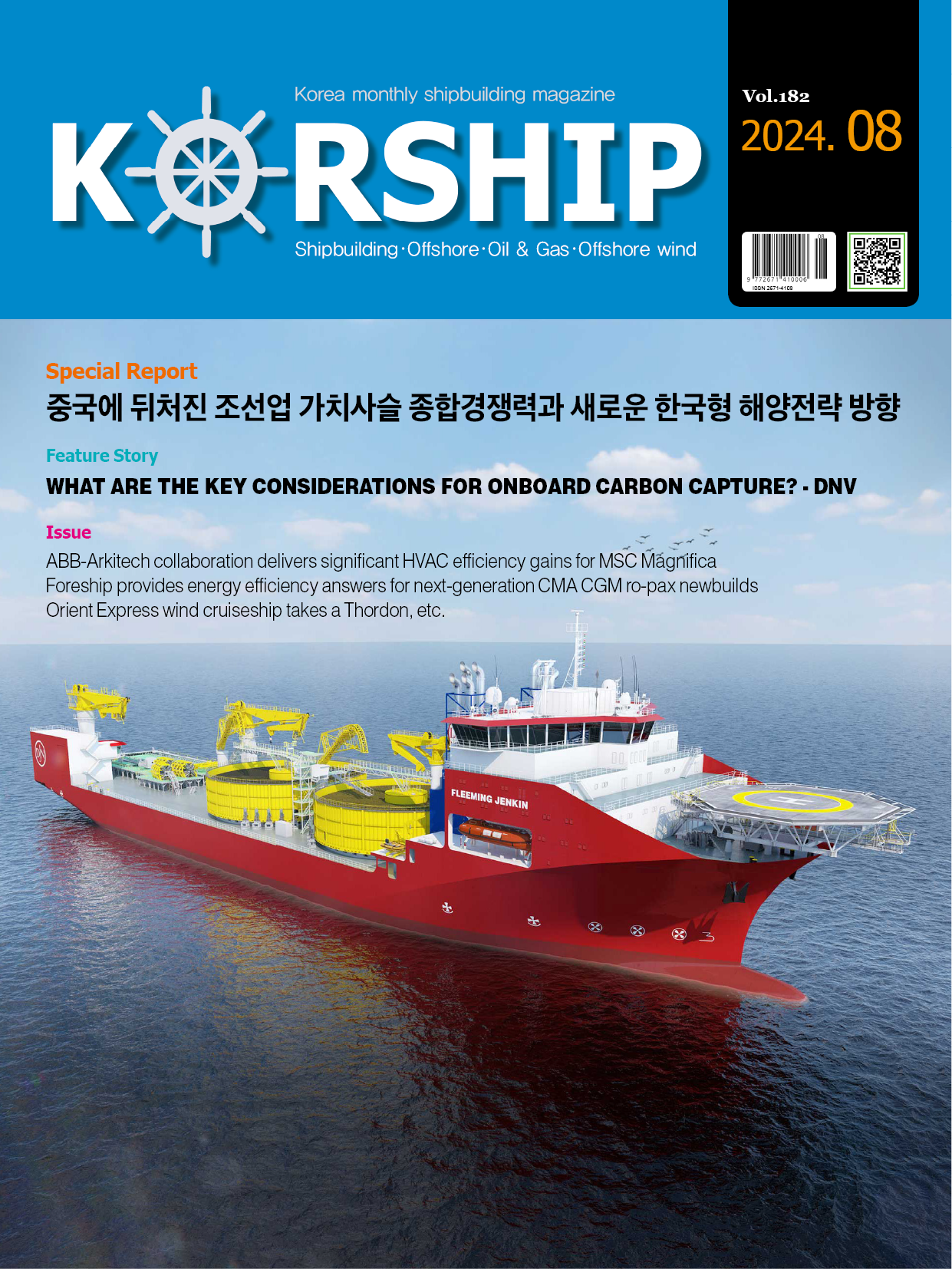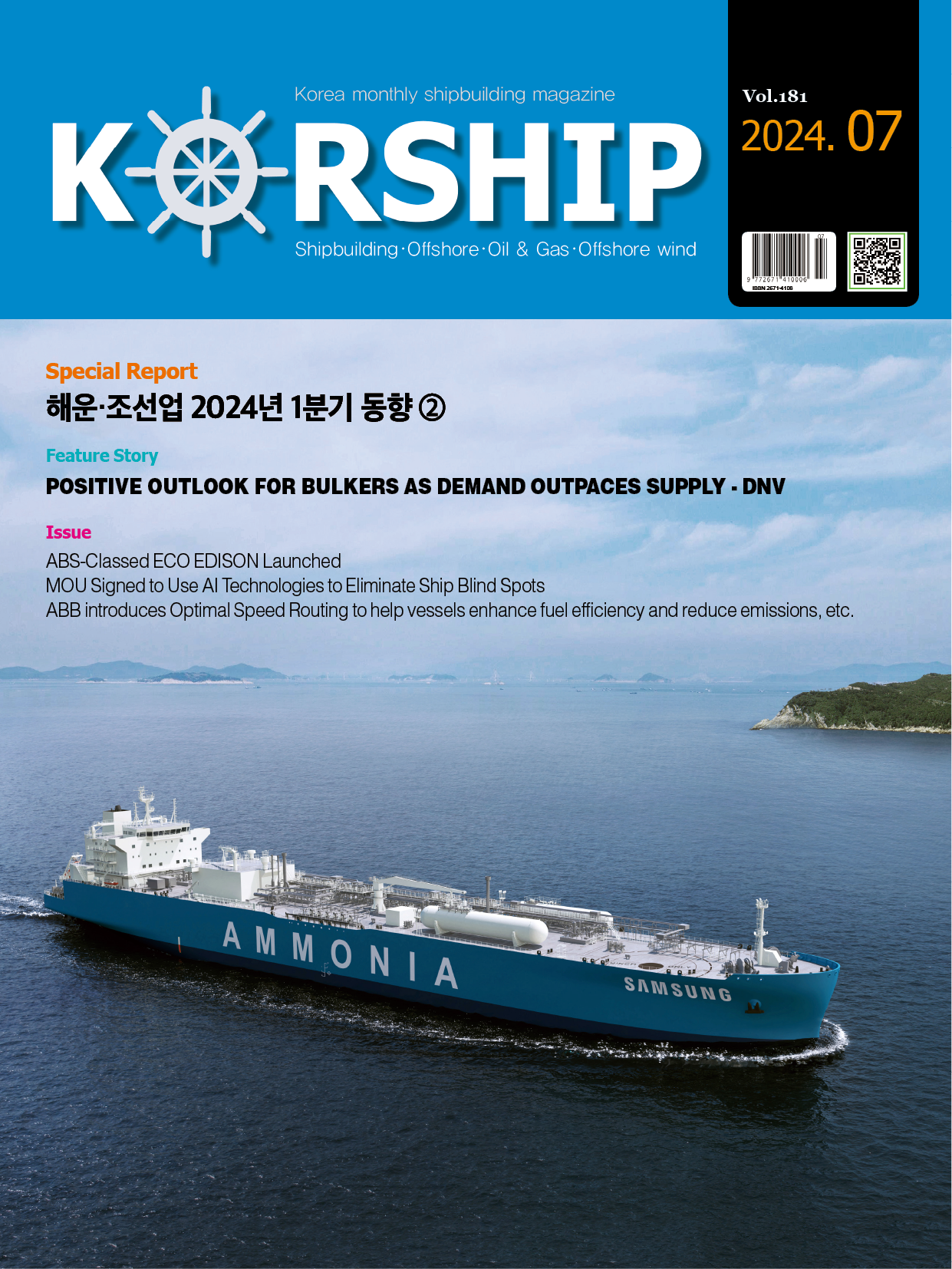Feature Story Route-specific stowage app significantly reduces seafastening costs
페이지 정보
작성자 최고관리자 댓글 0건 조회 890회 작성일 23-10-17 13:55본문
The new, easy-to-use online app developed by DNV will enable operators to design the seafastening of breakbulk cargo based on the specific route and the season. The “Route Specific Cargo Stowage” app calculates the accelerations the cargo will be exposed to along the given route and considers the season of the year the transport should take place. This data can then be used to determine precisely the required lashing and cargo-securing measures.
“Conventional applications tend to be complex and are intended for engineers,” says Jan Rüde, Ship Type Expert MPV – Hull Structure & Outfitting at DNV Maritime. “For the future we wanted to provide a solution that can be used by the shipping companies’ cargo planners without requiring major engineering expertise. A solution that delivers answers on the spot.”
The threat of wave-induced acceleration forces
Every breakbulk item carried on board requires individual seafastening using chains, cables, load-distribution and support frames, grillage, load spreaders, etc. As the ship moves in the waves, its cargo is exposed to strong acceleration and deceleration forces that must be factored in when determining where and how each item should be stowed. Improperly secured cargo can break loose, endangering the crew, other cargo and the ship itself, or be lost at sea. Therefore, proper seafastening is of vital interest to all stakeholders, from the cargo owner to the shipping company, and through to the insurers.
Realistic for the North Atlantic: the CSS Code
The general procedure for determining the seafastening measures for specific breakbulk cargo is based on the IMO’s Code of Safe Practice for Cargo Stowage and Securing(CSS Code). However, the CSS Code assumes adverse wind and wave conditions. Furthermore, as a general standard it cannot account for any ship-specific characteristics such as seakeeping behaviour. This means that the values resulting from CSS Code-based seafastening calculations tend to be quite conservative, limiting the ship operator’s flexibility in stowing cargo and optimizing space utilization when travelling through other sea regions. “The CSS Code calculation method produces load acceleration and deceleration figures that are unreasonably high for many other routes, especially during milder seasons,” says Rüde. “They lead to excessive seafastening measures that cause unnecessary costs and time delays.”
Ship data reside in the cloud
To get more realistic values for routes exposed to less severe sea conditions, the new DNV app will account for both the hull lines of the individual vessel and the wind and wave conditions along the intended route during the relevant season.
“What will really set this app apart,” explains Rüde, “is that users have to enter the ship-specific data only once for each vessel. The server-based software runs a series of general calculations for the ship and stores the results in DNV’s cloud where they can be accessed by the app from any location and at any time. The same set of data can also be used for all sister ships of a vessel that have identical hull lines.”
Few input data, quick acceleration values
These initial calculations define a series of draught, trim and stability cases for the vessel and how it will move in specific wave conditions. When planning for a transport project, all the cargo planner has to do is invoke the vessel record in the app, select the departure and destination portsA and – if desired – the season, and enter four values into a simple online form: draught, trim, speed and metacentric height(GM). The system returns the applicable acceleration values at different locations of the ship in a matter of seconds.
Keeping transported breakbulk cargo safe is the purpose of the
IMO’s CSS Code. But its rules apply to the most adverse seaways
and are therefore unnecessarily strict for calmer sea regions.
DNV has found an answer: an app to be launched soon,
that ensures cargo safety whilst reducing the cost of seafastening.
Easy customization with DNV’s Route Specific Cargo Stowage app
The identified route between the two ports is displayed as a line on a map. To adjust the route, the user can simply drag the line elsewhere as desired, for example, to include an additional waypoint or exclude a certain sea region. Clicking the “Calculate” button will make the software display the individual sea regions along the route as geometric “tiles”. Each tile represents a set of regional wave statistics for every month of the year. If a date has been entered for the journey, the app will also determine how much time the ship will spend in each of these cells during the relevant season. It then generates a set of tables listing the acceleration values in metres per second2 for each direction of acceleration(vertical, lateral or longitudinal) per each section of the ship, from aft to bow and from top to bottom.
The output in the familiar CSS Code format reflects both the standard acceleration values according to the CSS Code as well as the reduced acceleration for the planned route and season. In addition, it specifies the resulting reduction of the acceleration value compared to the CSS standard value.
Flexible stowage options and a reporting feature
For greater flexibility in choosing the stowage location on board, users can optionally enter the cargo item’s centre of gravity at the intended stowage position on the ship to obtain the precise acceleration values for that point. What is more, a maximum permissible acceleration value at a certain point can be defined to protect especially sensitive cargo for which the manufacturer has specified a maximum load. The app will then return the maximum wave height for the journey which must not be exceeded.
“Cargo owners want optimum protection for their cargo, so any deviation from the strict CSS Code must be justified by the shipping company,” explains Rüde. “The Route Specific Cargo Stowage app provides a printable reporting feature detailing the seafastening acceleration calculations for approval by the cargo owner. The reasoning behind the calculation method is described in an appendix to the report which bears the DNV logo – key factors to ensure credibility and acceptability.”
Minimizing fuel consumption, emissions and costs per tonne
Once the ship data have been uploaded, the simplicity of the app makes it easy to try out various cargo placement options in theory and recalculate the acceleration values on the fly. As a consequence, the available space on and below deck can be utilized more efficiently to minimize fuel consumption, carbon emissions and the costs per tonne of cargo carried.
Up to $150,000 saved per ship per year
To verify the cost-saving benefits of the app, DNV analysed three sample voyages together with a customer using data from three different vessels and for selected cargo items. In the best-case scenario, the acceleration values on the chosen route were nearly cut in half compared to the CSS Code calculation. “Depending on the given conditions, shipping companies could save up to $10,000 per trip or more, and between $100,000 and $150,000 per vessel per year,” reports Rüde. “And this figure does not even include the added benefit of being able to carry additional payload by making better use of the available cargo space on board. The results this app delivers speak for themselves.”
■ Source: DNV www.dnv.com
- 이전글Implement digitalization while saving money – with Remote I/O 23.10.17
- 다음글해운·조선업 2023년 상반기 동향 및 하반기 전망 ② 23.10.17












